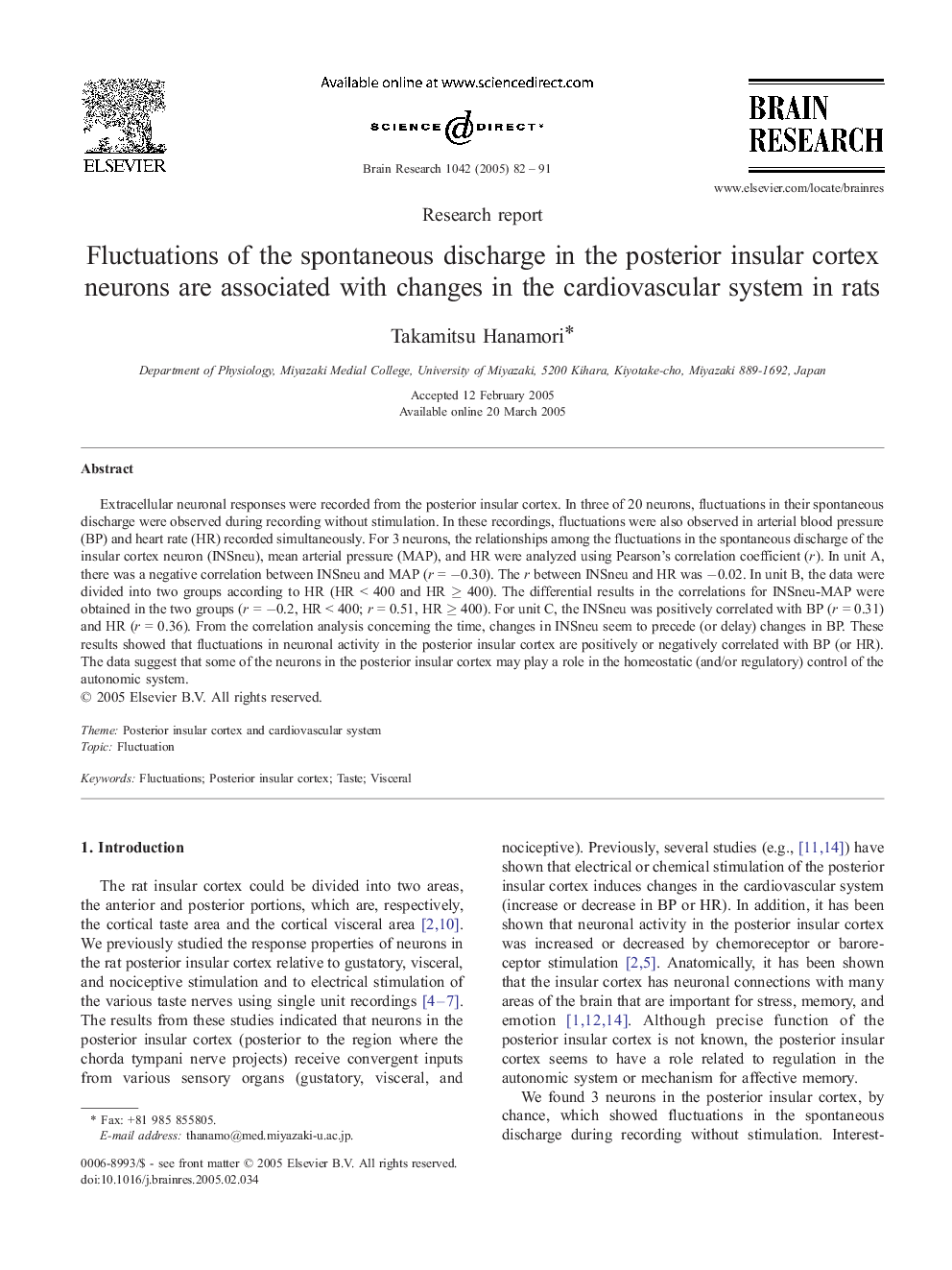| Article ID | Journal | Published Year | Pages | File Type |
|---|---|---|---|---|
| 9416378 | Brain Research | 2005 | 10 Pages |
Abstract
Extracellular neuronal responses were recorded from the posterior insular cortex. In three of 20 neurons, fluctuations in their spontaneous discharge were observed during recording without stimulation. In these recordings, fluctuations were also observed in arterial blood pressure (BP) and heart rate (HR) recorded simultaneously. For 3 neurons, the relationships among the fluctuations in the spontaneous discharge of the insular cortex neuron (INSneu), mean arterial pressure (MAP), and HR were analyzed using Pearson's correlation coefficient (r). In unit A, there was a negative correlation between INSneu and MAP (r = â0.30). The r between INSneu and HR was â0.02. In unit B, the data were divided into two groups according to HR (HR < 400 and HR ⥠400). The differential results in the correlations for INSneu-MAP were obtained in the two groups (r = â0.2, HR < 400; r = 0.51, HR ⥠400). For unit C, the INSneu was positively correlated with BP (r = 0.31) and HR (r = 0.36). From the correlation analysis concerning the time, changes in INSneu seem to precede (or delay) changes in BP. These results showed that fluctuations in neuronal activity in the posterior insular cortex are positively or negatively correlated with BP (or HR). The data suggest that some of the neurons in the posterior insular cortex may play a role in the homeostatic (and/or regulatory) control of the autonomic system.
Related Topics
Life Sciences
Neuroscience
Neuroscience (General)
Authors
Takamitsu Hanamori,
